If you’re like a lot of experts and entrepreneurs, you have a continual flow of ideas and concepts that enter your brain, but you’re not sure where to file them. Well, it turns out your brain was meant for generating ideas—not filing things away! Or, as David Allen puts it, your brain is meant to be a factory not a warehouse. Ready to bring that back to balance? Good, because there’s an app for that! Really a solution made up of multiple apps. And my guest today generously shares his expertise in helping all of us get stuff out of our heads and onto paper, into apps, and other trusted systems so they can work for us.
Caelan Huntress came to marketing by way of the circus—probably not your traditional trajectory, which is what makes him such a fun guest! His elocution and performance skills command attention, which helps when you’re leading presentations and coaching business clients. Caelan has built a business around helping experts and entrepreneurs set up smart marketing systems. In today’s episode, we talk about how he is transitioning his area of focus to helping hybrid teams do better on Zoom by gamifying their presentations. We talk about having processes for things, as well as his five-step system that gives his clients a framework for harnessing and maximizing their creativity.
If you’re ready to get hyper-organized and learn all about playful production, this is an episode you must not miss. So now, without further ado, on with the show!
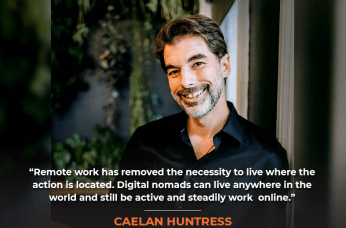
In This Episode
- [02:26] Caelan talks about how he and his family ended up in New Zealand.
- [06:09] What are the advantages and the essential tools for a good digital infrastructure of a remote work setup?
- [08:13] Stephan and Caelan discuss David Allen’s methodology and the program they use, which is called Things by Cultured Code.
- [13:18] Caelan shares his 5-step productivity, task management, and creative projects framework.
- [15:58] Stephan mentions pink sheets, and Caelan explains how he uses them in his book writing.
- [22:01] What’s the role of Caelan in Stellar Platforms? Who are their clients?
- [26:08] According to Caelan, online summits have changed. Stephan wants to know what’s working best online.
- [32:50] Stephan speaks about a parody site called Worst of Web3 he and Greg Merrilees launched.
- [36:59] What’s the most effective way to earn attention in a live presentation? What are the best practices and the things to avoid when using Zoom?
- [42:46] The hardest thing about marketing yourself.
- [49:15] You can get a free chapter of Caelan’s book, Marketing Yourself, by going to marketingyourselfbook.com/freechapter and subscribing to my Stellar Platforms newsletter.
- [52:18] Caelan offers coaching and one-on-one consulting. Visit his website or the Stellar platforms’ website.
Hello and welcome to Marketing Speak. I’m your host, Stephan Spencer. It’s my pleasure to have Caelan Huntress with us. Caelan is the author of Marketing Yourself and the creative director of Stellar Platforms, a digital marketing agency that helps experts and entrepreneurs set up smart marketing systems.
He’s an American digital nomad living in New Zealand and has spent ten years running an online business while traveling the world with his young family. Caelan, it’s so great to have you on the show.
Thanks for having me, Stephan. I’m looking forward to this conversation.
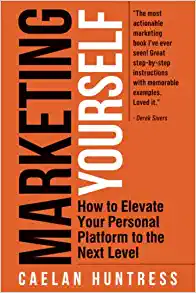
Yeah, me too. For one thing, I really love that you picked New Zealand as a place to settle down. It’s such an amazing, beautiful, magical part of the world. I lived there for seven and a half years. I moved back to the US in 2007. It was a gift to raise my daughters in New Zealand and have them experience nature and the ethos of a slower, more centered life. That was really beautiful. What brought you to New Zealand, and what keeps you there?
When we left the United States, we went to Costa Rica. I’d love to say that we’ve been gallivanting around the world because I’m independently wealthy, and we could travel wherever we wanted, but that wasn’t the reality for my family. America broke us.
When we went to Costa Rica, we picked up the pieces. I went with my two kids and my pregnant wife to have a baby in Costa Rica. He’s an anchor baby. He’s a citizen in that Central American country, and we’re all permanent residents. Living in Costa Rica gave us health care that wouldn’t bankrupt us. It protected us from the American challenge that I know many of your listeners are dealing with.
We lived in Costa Rica for several years and really enjoyed it, but Costa Rica wants to eat you. It’s got bugs, spiders, and snakes. When you have three little kids, that’s really stressful. So we thought, what if this was completely different? We went somewhere with no natural predators, so we came to New Zealand. People have heard everything about New Zealand, the hobbits and the unicorns. It’s all true. It’s a magical place.
Including the big tower with the eye on it. Yeah, that’s real, too.
Yeah, they’ve got the Sauron tower. You got to throw the One Ring in there every couple of years.
How long have you been in New Zealand?
Five years.
Five years. Okay. And how long were you in Costa Rica?
I was in Costa Rica for about three and a half years, and then we went back to the States for a little bit to be with some family. We had some family members passing on. So after we were there for a little while, the American culture is a unique kind of culture to raise children in.
When we looked at the options of raising our kids in different cultures where we’ve been, we saw New Zealand as a wholesome place where we could raise our kids. Then, Jacinda Ardern, currently the Prime Minister, revealed that she was pregnant right after she won her election. In a speech before the UN General Assembly, she said that her goal was to make New Zealand the best place in the world to raise a child.
Having that sort of stated goal from the political leadership gives a different direction to a culture. Living in New Zealand has been a really great match for our family. We live on the south island of the Pacific Ocean, so there’s nothing between Antarctica and me but water. There’s a penguin colony a mile from my house, so it’s amazing being out here.
Living in a new place can be difficult as you acclimate to new customs and surroundings. Yet, it presents exciting opportunities for personal and professional growth as well. Share on XThat’s awesome. Is it the yellow-eyed penguins? Is that what they’re called?

The yellow-eyed penguins. Those are the ones, yeah. But the neat thing about being so far out here in the wilderness, Stephan, is that because we have a fiber optic internet connection, I can still connect with people worldwide. Remote work has removed the necessity to live where the action is. Digital nomads can live anywhere in the world and still be extremely online.
That is so true. When I picked up and moved to New Zealand, it was 1999, and it was easier than I thought it might be. I didn’t know what I was in for because I had literally never stepped foot into the country before applying for a permanent residency and getting in. It was quite a leap of faith that it would work out, but it worked out fabulously. It was such a great experience. What makes a remote work situation or digital nomad-type situation successful or not successful in your view?
My ability to put my business into a backpack and go to any desk where I can get Wi-Fi and caffeine has been essential to my success.
Great question. For me, it’s always been about portability. My ability to put my business into a backpack and go to any desk where I can get Wi-Fi and caffeine has been essential to my success because we traveled so much. It didn’t matter what town I was in. So if I got into a co-working space or a cafe where I could connect online, I could open up my backpack and surround myself with the tools in moments that I needed to run my business.
A lot of the physical tools had to be pared down. I had to live a very minimalistic life. Once I had that portable setup and could take it anywhere, I had to build a digital infrastructure that supported my business. A lot of this relies on automation, being able to give someone a calendar link and say, “yes, let’s talk here. My systems will set it up.” But I don’t have to do the back-and-forth emails six times to find a time on the calendar because the systems automate that. I found that very helpful for running an online business.
What are some of the systems that you’re using? Obviously, a calendar system like Calendly, Acuity, or OnceHub. I use Acuity. I’d like to know what tools are the essential parts of good digital infrastructure for a remote work environment.
I’d say that Calendly, which is the one that I use, that’s how I set up my scheduling. And I spend a lot of time on Zoom because a lot of my work, Stephan, is coaching experts and entrepreneurs or consulting on their systems and helping them streamline the journey from stranger to customer.
Interacting with people on video calls is a large part of what I do. I use FreshBooks for invoicing, which makes the money side of my business easy. But the essential software that I use is a task manager. Have you read Getting Things Done by David Allen?
I love that book. Yes. Actually, I’ve interviewed David Allen multiple times.
Really? Wow.
Yeah. Those episodes are on my other podcast, my productivity, personal development, and spirituality podcast, Get Yourself Optimized. Yeah, he’s phenomenal. GTD, Getting Things Done, the whole methodology, not just the book, has changed my life. It changed my life at least a decade ago, maybe a decade and a half ago, when I first read it. It really just spoke to me.
I love getting stuff out of my head into a trusted system. At the time, I was writing things on the backs of envelopes, on post-it notes, and TextPad-type apps. The information was everywhere; thus, I didn’t trust any particular system, so I had it all stay in my head. I love what he says about your brain. It’s not meant to be a warehouse. It’s not good at that. It’s intended to be a factory.
Yeah. He said, “your mind is for having ideas, not holding them.” I love that. What I learned from him that was so transformational, Stephan, is that having an inbox where you can put everything that you then sort, that universal destination. I have a hotkey on my keyboard where I hit command space, and then I just put in the idea. The program I use is called Things by Cultured Code. It’s a Mac-only program.
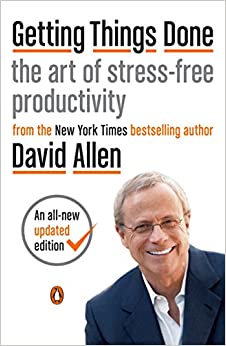
I use it, too, yeah.
Is that at yours too? Yeah, it’s a great program.
I will not ever switch.
I tried.
I was using it and thought I might switch to something like OmniFocus. That’s the big competitor to Things in the GTD space. I’m like, “no. It’s too complicated. Things is just so much better.”
Yeah, it really is. I had used Things for three or four years while living in Costa Rica, and I thought, “well, let me see if there’s another app.” So I spent about three months testing different apps. After that, I returned to Things by Cultured Code because the interface is so great and minimal. Just the way that it sorts things, I found to be very helpful.
Yeah. Is there any particular way of structuring your Things app and how you set up your trusted system? I know that David teaches how you have an action box or folder. Do you have a ‘read review folder,’ a ‘waiting for,’ and what are some other ones?
Someday maybe.
Someday maybe, thank you. That one is built into Things. I like that.
Yeah, that one’s built-in.
You have to kludge your way into having ‘waiting for.’ It’s either a tag or something like that. How do you set that up in Things, and how do you set it up also in your email?
What I found deficient in the Things program was that I didn’t have a place for things that were top of mind. In David Allen’s parlance, this is waiting. But for me, it’s not just things I’m waiting for, but something I need to keep thinking about and can’t necessarily put down. The two top projects I have in my Things interface when I go today list everything by project. If you drag and drop the projects on the left-hand side, then it drags and drops those categories on the right-hand side.
Marketing trends change so fast, you may always be testing what does and doesn’t work. Share on XIt was really helpful to have two special projects right up at the top, and I call them ‘top of mind and next.’ That way, if there’s something where it’s urgent, I got to do this right away. So I can dip into other projects and work on them. But when I have that moment where I pull back from my work, and I’m like, “Okay, what am I doing,” then I have those two projects right at the top—top of mind and next. That could contain something from any project, which I found very helpful.
That’s cool. I have a project, or it’s actually called an area in Things parlance. The area of focus, I call it ‘hot,’ is similar to what you’re describing. Then I put the projects I consider hot there, so they’re way up near the top. I have massive projects.
It’s insane how many to-dos I have in Things. It probably adds up to at least 5000, if not 6000. It is a wonderful gift, and it is overwhelming. I get overwhelmed when I go into Things, which stresses me a bit. Do you feel that, too, or have you figured out a workaround?
Yeah. I like having a storehouse of ideas. The creative process, Stephan, it got five steps. The first step is to collect all your ideas. This applies to productivity, task management, and any creative projects you’re working on.

You want to collect ideas throughout your life. It’s not something you sit down to do. But amid other things you’re working on, you say, “oh, that idea would be good over here. You need some system to collect those ideas.”
The second step in the creative process is to sort those ideas. That’s good to do during the dedicated time. If you’re working on a project, you can go through your collection and say, “what do I have here? What really matters? What can I use in something and decide what to keep, postpone, or delete?” That sorting process brings that volume down to something manageable to work with.
Once you know how much you want to work with, the third step is to craft. Crafting might be writing something, designing something, or putting things together, but it’s some way of assembling the pieces into the item you’re going to create. The fourth step is to polish it to make it ready to show the world. And the fifth step is to publish. Going through those five steps—collect, sort, craft, polish, and publish—I find that having this framework helps me produce a lot more than if I was doing whatever I felt like doing at the moment.
Did you develop this on your own, or is this based on another thought leader or framework?
There's a lot of opportunity for action-takers who are willing to get their face dirty. However, the critics who stand on the side with their commentary are missing the real game. Share on XI haven’t seen anybody else lay out this framework this way, so I guess it’s my framework. I’ve done some writing on it. These five steps are the categories that I go through. I don’t know if they’re the steps everybody goes through, but this framework is the most useful when I feel, “Okay, I need to produce something and get it out into the world. Which of these five stages do I have a roadblock?” So I’ll go work on that stage to push this project forward.
Got it. Are you familiar with Thought Leaders?.
Matt Church. He runs Thought Leaders Business School. I am in that program. I’ve been a Thought Leaders Business School member for over two years.
Small world, isn’t it? It’s awesome. Anyway, I’ve had Matt Church on the podcast. We talked about pink sheets, which I learned about from Taki Moore. I love pink sheets. I love this idea of having a repository of all your bits and information nuggets that you want to incorporate into things like articles, PowerPoints, social media posts, and books. And to have the context, content, metaphor, case studies, and all that figured out in advance so you can whip that out of your Rolodex of ideas and IP nuggets.
That’s phenomenal, and yet I haven’t really implemented it. I tried. I started, and then I didn’t put it into practice. It’s a great methodology. But if you’re not going to put it into practice, it’s just theory. It just is edutainment. You must be familiar with pink sheets, right?
Very. Yeah, I have a catalog of pink sheets. Pink sheets are how I wrote my book, Marketing Yourself. What I did to write this book, Stephan, is I used a pink sheet per chapter. I did intellectual thinking first. I said, “Okay, these are the pink sheets for what I want to talk about.” So I identified 24, put them in a progression, and put them on a Trello board because I’m a marketer. I like to systematize things.
For every pink sheet, I wrote a newsletter. That newsletter followed a seven-step formula for many of my newsletters. First, you start with a story and a startling statistic, and you go through it. The pink sheet gave me all the material I needed to fill this formula and create an article.
I spent a few months writing a newsletter on each pink sheet I had in my pink sheet deck. When I went through 24 of them, I took those blog posts that I had syndicated. I sent them out through ConvertKit. I published them on my blog. I published them on Medium. It was generating a lot of content that was building an audience of people who said, “hey, this guy talks about marketing. I’m going to keep reading what he has to say.”
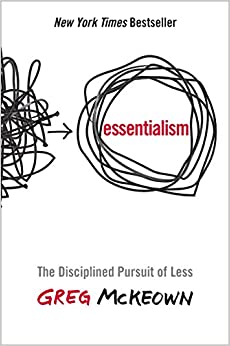
I was building my audience before I even wrote the book. Then I took those 24 articles, put them into Trello, and dragged and dropped them. I said, “what’s the order here? What’s the progression?” I found the order I wanted them to be in, and then I just copied and pasted the articles, dropped them into a Google Doc, and had a first draft of the manuscript.
Editing that manuscript, the work that I was already producing and publishing, was neat when I published these articles on Medium. I submitted them to publications. I had editors going through and editing my articles to make them tighter and make them better. The first draft of my book had already gone through some free editing from other writers on the internet.
This was a really effective way to produce my book, Stephan. Because of the pink sheets, these modular pieces of intellectual property, you can put into 15 minutes of a keynote or a chapter of a book. They allow me to reuse my material without having to think about it again because I’ve got this great digest of ideas on one worksheet that I can pull out anytime I need it.
Yeah, that’s cool. There were some early innovators in the world of blogs becoming books. For example, John Battelle created the book The Search from his blog. I believe that The Long Tail also started as a blog.
I just finished reading Mark Manson‘s book.
Chris Anderson, yes. He wrote The Long Tail. This is really cool. I love how you apply those concepts of pink sheets. You’re putting this into action, which is where the rubber meets the road, and that’s where I failed.
My Kolbe score is 3393. The nine is for quick start action mode. So follow thru action mode and the researching, which is fact finder action mode, is what that’s called. I forget the other one, but they’re all three for me. I’m just fast and loose with everything. I need a clean-up crew to follow me around, make these projects come to fruition, and dot the I’s and cross the T’s.
I’m prolific with ideas. I can start projects, businesses, and campaigns just like that. However, getting the systems in place and the team around me to help bring these to fruition is critically important, or I wouldn’t get anything done.
Find out how you can take your advantages and apply those to a team where it can help things grow.
Yeah, what you have is a gift, Stephan. Many people can’t generate ideas at the volume and quality you can. Partnering with others who can support your ideation makes something much different than somebody with a more balanced Kolbe score. The trick is to find out how you can take your advantages and apply those to a team where it can help things grow.
You have an agency, or you’re part of an agency called Stellar Platforms. Presumably, the whole team is remote. Tell me how that’s set up and how you fit into the picture.
Yeah. I’m the creative director of Stellar Platforms. That’s just the title I gave myself. After all, I didn’t want to get spammed on LinkedIn because my title was CEO/Founder. So a quick tip, if you’re getting too much LinkedIn spam, get out of those searches where people say, “who’s the founder I can pitch to?” My LinkedIn spam is very low because of that.
Also, being a creative director aligns with me better than being the owner. I could call myself a marketing automation specialist because I do a lot of digging and systematized work. But as the creative director, I think of myself as somebody who says, “well, these are the projects that we’re going to do, and let’s go in this direction and do it.”
I hire contractors worldwide for any project I’m focused on. Some contractors have been working with me for years. Some are just working on a specific task for a particular time. I like the flexibility of that framework, Stephan, because then it means that I can expand or reduce my team as needed depending on how many clients I have coming in.
Yeah, that makes sense. What would be an example of a project or client you’re in the midst of changing their lives and businesses?
Yeah. I’ve had some really great clients. I’ve been fortunate to work with New York Times bestselling authors, hall of fame public speakers, and nationally syndicated radio hosts. For a long time, I focused on the niche on authors, coaches, and speakers—people who had something to say and sell—but needed help with the systems.
Most people don’t have that ‘writing hat’ they can put on where they understand the customer needs.
A lot of systems people, you can give a systems thinker your Infusionsoft logins, and they can go, get in there, and make the campaign, but what’s that campaign going to say? What’s going to create an emotional reaction in the audience? Most systems people don’t have that ‘writing hat’ they can put on where they understand the customer needs. They don’t know what to put in those specific digital assets.
A lot of the unique value I bring is that I can wear all hats. I can write the copy for the landing page, design it, and integrate it with Zapier. That allows me to outsource bulk to contractors if I need to produce a lot of assets.
When I worked with Lisa Garr, the host of The Aware Show, she’s a book interviewing show, The Aware Show. She interviews authors in the fields of neuroscience, consciousness, and spirituality. We ran online summits when I worked with her as our digital marketing manager. This was back in 2015 and 2016 when summits were kind of new.
I would produce a suite of sales pages for every guest at the summit. She’d interview ten different authors on a topic. The only qualification that we had for the authors was that they had an online course with an affiliate program. At the end of the interview, Lisa would promote Hoplink on-air.
Go to theawareshow.com/assaraf because she’s interviewing John Assaraf, and you can get this special program that he’s put together at a special price for Aware Show listeners. I built a volume of sales pages. It got me good at producing the end-to-end sales funnel quickly because I did produce them in batches of 10.
We ran a two-week telesummit with ten different authors. Then six weeks later, we’d run another one. It just became this machine where we were running these summits and mailing them out to her list, and the guests would mail them out to their lists. Everybody grew their lists, and we generated a bunch of revenue. That was a really good project.
Oh, that’s cool. Does she still do online summits?
One of the problems with internet advice is that it goes stale.
Online summits changed. One of the problems with internet advice is that it goes stale. If you google online summits, you’ll get many blog posts from people talking about how lucrative they can be because they wrote this blog post in 2015. And because of the domain age, Google will rank that post pretty high, but the market has changed.
The only way to find out what’s working, Stephan, and I’m sure you’ve seen this in your marketing work, is to test what’s working right now. When we first started doing telesummits, it was easy. We generated a quarter of a million dollars of revenue per summit and did that six times in a row. And then, we noticed the students started to dry up.
It wasn’t just us. I checked with my colleagues in the industry. Around 2017, people stopped paying $300 for a passive online course because they realized that this ticket price only gave them access to content that they were responsible for putting into a curriculum and teaching themselves. The very things that we get from a classroom experience, access to the teacher answering your questions, a cohort of peers working through the material, and feedback from others on your interpretation of the material, you don’t get any of that in an online course.
Online courses changed so that by 2019, there were still lots of marketers saying, “if you put together an online course on how to sell online courses like me, you can kick back,” and it’s hula girls and margaritas. So that was the message that was going out there. But I was working with many people hiring me to make online courses for them, thinking it was the key to passive revenue. So I had to stop taking that work because people weren’t getting the results.
If they didn’t have a big enough list, product-market fit, strong relationship with an audience, or a product that solved a specific problem, then it was really hard to sell it for higher than the price of a book because an online course is consumed like a book. You open it when you want to and close it when you’re done.
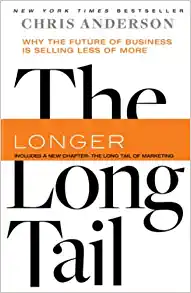
I found a lot more success with experts and entrepreneurs who put together a book price online course where it’s $25. It’s a way to learn about my content and a little bit about me. MRSI put out this survey in 2019. They interviewed more than 3000-course graders. It’s a pretty big sample size. They said, “how do you make your money? Where’s your revenue coming from?” Only 3% of the respondents had most of their revenue from online courses.
Most people who have online courses for sale get most of their revenue from services, coaching, and consulting. So knowing what’s happening under the hood with marketing is essential to ignore the well-meaning but wrong advice that has now gone stale. And find out what’s happening.
A lot of times, the only way you can know what’s happening is by running experiments yourself, putting out an online course for $300 and seeing if people buy it, relaunching it for $25 and seeing if you can convert that into expensive high-end services. Those two business models are very different, but they use the same assets and help people make those strategic decisions. That’s the sort of work that I do at Stellar Platforms.
I got it. That makes a lot of sense. What is working right now if it’s not online summits? Is it challenges like five or seven-day challenges? Is it the ask survey, ASK Method surveying or has that kind of jumped the shark? What’s the latest stuff that’s working?
I see people having good experience with lead generation and quizzes. Quizzes allow the harvesting of the data. Many of the Ryan Levesque-type questions will enable you to gather those phrases from your audience. You can insert those into quizzes; quizzes also give you feedback on a score or result. Giving people a result based on your answers, like, “you’re this type of person, and you should do this type of thing,” shows that superficial understanding of oneself that people are willing to give an email address for.
I see people having good experience with lead generation and quizzes. Quizzes allow the harvesting of the data.
I’m still seeing good results with automation. For people who have email automation and they’re building their list in that first phase of email automation, you can generate more revenue from your onboarding sequence than from your email newsletter. This is according to data put out by Campaign Monitor. They found that 320% more revenue is generated from automated emails than from non-automated emails.
It’s not that broadcast to your list of people subscribing to you for five years. That’s not where the real money is to be made. The real money in email automation is building your list with new people and making offers to them as soon as they enter the sequence.
I’m doing a lot of investigation into Web3. I play around with crypto because I know Web2 marketing well, but Web3 is a new space. I’m fascinated by the journey people go through as they learn about a crypto project, as they’re interacting in Discord and Telegram, two of the biggest platforms for people to interact in that space, but it’s very new. Everybody in it is an early adopter.
The way that they interact will be different than how the laggards will interact when they enter the space in a couple of years. So the space is really changing. So I wish I had a snappy answer for you this is what’s working right now. But if I gave that answer to you, you shouldn’t trust it because by the time your listeners hear that, it might be obsolete.
The best way to find out what’s working for your type of business is to run multiple experiments and pay attention to where you see results.
Marketing is changing so fast that we can make hypotheses about what we think will work. Then, we can test those hypotheses. But the best way to find out what’s working for your type of business, Stephan, is to run multiple experiments and pay attention to where you see results.
Yup, good stuff. This is very good stuff. I, speaking of Web3, just launched with my friend and colleague, Greg Merrilees, a site called worstofweb3.com, which is a parody site of all the worst practices we see across the board on these Web3 websites.
Whether it’s an NFT project, a cryptocurrency, or a blockchain technology platform service provider, they seem to be doing the same silly, just unaware of things like white text on a black background. Gratuitous spinning things that don’t add any value to the page, just load time. We include a lot of convoluted and technical jargon, which people will only understand if immersed in this world of Web3.
What the heck is total value locked? I know, but it’s very hard for somebody new to that world to make sense of a Web3 website. It’s Greek. It’s like a foreign language. So I want to plug that fun site that we just launched. It’s a parody, so don’t take it too seriously. We’re not picking on any one particular website. It’s just a mishmash of some of their different mistakes.
Bad practices. Yeah, there are so many to choose from. This is something that we find on the cutting edge. It’s rough. This is how things get sharpened. It goes through friction. On the cutting edge, in a space that’s as new as Web3, there are a lot of people who don’t know UX best practices, who don’t know how to design for the consumer, but they know blockchain programming, and they can make smart contracts and throw together a basic website.
Part of the difficulty of being in a new space is that there’s this friction everywhere, but it’s also part of the opportunity because it means many problems to fix.
Part of the difficulty of being in a new space is that there’s this friction everywhere, but it’s also part of the opportunity because it means many problems to fix. Problems that intelligent people who are developing new technology have yet to even think of and consider. I’ve been learning about Web3 because I know my Web2 marketing skills will be obsolete.
Sometime in the next 5–10 years, email automation might not even be necessary because there’s a completely different way that we interact online. So I’m fascinated by this new space in Web3 and how we’re changing our communication.
Yeah. Email and all that stuff may be obsolete because telepathy might be the next thing.
Who knows.
I’m curious to hear some of your favorite tips and mistakes to avoid for Zoom because you’ve spoken a lot about this. I’ve attended some of your training and presentations around Zoom best practices. What do we need to do in terms of the background, the positioning of the camera, and lighting? What to do about what to wear and all that stuff? There are some great tips.
I remember, now it just popped into my head, you gave some great Zoom-based games to foster team building and interactivity amongst the cohorts if you’re dealing with small groups of people where you can break them up into breakout groups. So yeah, you had some fun games from memory. Correct me if I’m wrong, but tell me what’s the best tips around Zoom.
Yeah, I spent a lot of time on Zoom. When the pandemic started, I found myself at this unique crossroads of performance and technology because I’ve been a digital marketer for ten years. So I’m very comfortable with tech. As a remote worker, I’ve been using Zoom for a long time. But I’m also a performer.
In addition to being a professional keynote speaker, I started my career as an acrobat in the circus. So I’ve spent a lot of time on stage. Developing a relationship with an audience and learning how to earn and maintain their attention has given me many practical tools I use in my marketing work. But when the pandemic started, Stephan, I found myself doing a lot of work with companies with in-person workshops. They needed to convert to virtual, and they needed to do it fast.

A lot of my business in 2020 was helping people gamify their workshops and translate them into a virtual Zoom experience. As soon as the pandemic hit and I saw everybody was locking down, I took every course I could, found every expert in virtual facilitation, and learned everything I could to quickly become one of the foremost experts in presenting online. I teach a course through eSpeakers, a professional speaker directory, teaching other professional speakers how to give better Zoom presentations.
I’ve learned that the camera and the lighting are all the basic stuff. There are ways to set yourself up so that you’re up high enough and not down low so that you’re close to your microphone instead of far away. There are ways that you can come through better in terms of presentation.
Games and activities with the participants are the most effective for earning attention.
Games and activities with the participants are the most effective for earning attention. This is unique about a live presentation you can’t do in a replay. In a replay, people watch passively. But in a live interactive environment, you can ask them for feedback. You can gather contributions and work that contribution into your presentation.
I’m transitioning my business with some of the work I do now. I’ve got the marketing side, where I help experts and entrepreneurs set up smart marketing systems. But I’ve been doing a lot of work in this field that I’m calling playful productivity, where I help corporate teams with a hybrid team culture. I’ll do play sessions, where I’ll teach productivity tactics through play, how to gamify your work and facilitate game sessions that allow a distributed team working remotely to develop those relationships we used to do around the water cooler.
The most practical tip I can give, Stephan, is to begin a meeting with an unofficial start. An unofficial start goes from five minutes before the scheduled time of a meeting to three minutes after the scheduled time. In some activities, when people arrive, you can invite them to participate, open up the chat box, and use it to interact with one another, and it also postpones the meeting from starting at the top of the hour.
If you get the calendar in the invitation, it’s 8 AM, you hit join, “oh, you got to update Zoom,” and “oh, this program’s in the way, oh, you got to restart,” there’s some confusion that’s inevitable at the beginning. So if you can create a space where people can come in early and have some interaction, but you’re not missing anything if you enter the doors a little late, then it preserves the environment and invites activity.
If you ask somebody to use the chat box at the beginning of a meeting, it’s much more likely that they will use it in the middle. But if you asked for the chat box to be open for the first time 20 minutes in, there’s the momentum you have to overcome. So starting with an unofficial start that educates your participants on what you’ll be doing throughout the presentation was very effective.
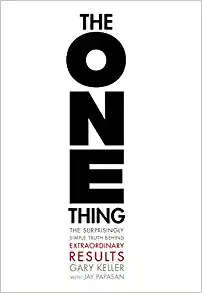
Yeah, that’s a great tip. What would be an example of an activity that would be fun, gamifying the Zoom experience for somebody, and doesn’t seem too arbitrary or just ridiculous?
Here, I’ll show you. If you’re watching this on the video, I’ve got a presentation I’m doing later today. I’ve got this slide. It’s not sized quite right, but let’s get it behind me here. If you’re watching this on audio, sorry, you won’t be able to see this.
I ask people, “on a scale of cats, how are you feeling today? Pick a cat.” Either type a number in the chat box or use the stamp tool. It’s kind of difficult to find the stamp tool. But in the middle of my presentation that I’m giving later today, I’ll ask people to use the stamp tool on the Zoom whiteboard.
They can pick on the scale of dogs, “how are you feeling today? Pick a dog.” Everybody who picked six, “why did you pick six?” The easiest one I find is another I do; I ask them to stamp on the world map. Since New Zealand is often left off the world map, I put it front and center. This is the easiest one. “What time is it where you are? Type it in the chat box; what time is it?” That way, people worldwide can get a sense of who’s in the room.
The Ryan Levesque question, “what’s the hardest thing?” Asking people to put it in the chat box. “What’s the hardest thing about this topic?” This is a great way to get engagement right in the beginning.
Yeah, I like it. In your opinion, what is the hardest thing about marketing yourself?
I’ve been asking this question for a couple of years because I want to know what other people think about the hardest thing if I write a book on Marketing Yourself. What might be different? I’ve got skills that are different from the people who are reading my book. I hear from people that the hardest thing about marketing yourself is consistently staying on message—setting up systems so you don’t have to spend all your time troubleshooting the tech and dealing with impostor syndrome.
If you’re going to get up on a stage and share your message with an audience, there will be people who dislike you.
If I’m going to get up on stage didn’t share my message, won’t people know I’m a fraud? This is common with people with a personal brand dealing with impostor syndrome. Dealing with that, it’s part of the game. If you’re going to get up on a stage and share your message with an audience, there will be people who dislike you.
Shining attracts haters. They’re going to see, “oh, I hate people like that.” And I’m going to tell you why because you were bold enough to stand up and take that position, so I’m going to take out my trauma on you. So knowing that that’s part of the game and developing the thick skin to deal with it, moving on, and still sharing your message is part of the work of marketing yourself.
Yeah, it’s a lot easier to be a critic than a creator. When you’re a critic, you shut off the creator part of you. When you’re a creator, you probably shut off the critic part of yourself to get into the flow.
Yeah. Since it’s on topic, I’ll share this quote with you from Theodore Roosevelt. You know this quote he did about the arena?
I don’t.
I haven’t had this up because it’s in the presentation I’m giving later today. He said,
“It is not the critic who counts; not the man who points out how the strong man stumbles, or where the doer of deeds could have done them better. The credit belongs to the man who is actually in the arena, whose face is marred by dust and sweat and blood; who strives valiantly; who errs, who comes short again and again, because there is no effort without error and shortcoming; but who does actually strive to do the deeds; who knows great enthusiasms, the great devotions; who spends himself in a worthy cause; who at the best knows in the end the triumph of high achievement, and who at the worst, if he fails, at least fails while daring greatly, so that his place shall never be with those cold and timid souls who neither know victory nor defeat.” – Theodore Roosevelt, the Man in the Arena.
That’s a great quote. I haven’t heard that before. There’s a lot of opportunity for folks who are action-takers who are willing to get their face dirty. The critics who stand on the side with their commentary they’re missing the real game.
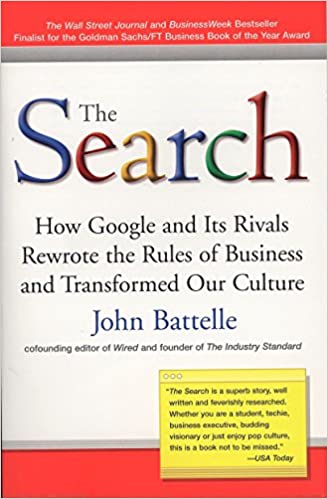
I know one thing that relates to this is that you’ve trimmed down a lot of the unnecessary fluff as a digital nomad and a remote worker. You can carry everything in a backpack sort of thing. That feels like you’ve probably read the book, Essentialism. Have you?
Essentialism, I haven’t, but it sounds like the type of book I like. I’ll get it.
Yeah, you would like that book. Another similar story is The ONE Thing by Gary Keller, the co-founder of Keller Williams Realty. Only one question matters when you’re trying to figure out what to pare down. And that is, what is the one thing that, if that is done, I can cut out a whole bunch of other things, make them either obsolete or otherwise unnecessary, or already completed?
He’s always asking that question of himself. What’s that one thing so he can get right to that essential one thing and cut out everything else?
Yeah, because you don’t want to be distracted.
Yeah. You might also have heard about this before. It’s attributed to Warren Buffet. Warren Buffett supposedly had told somebody, or this is his system, you have 25 different top priorities, projects, or whatever. You put them in priority order, and then you can pick maybe five. It’s a small number. Then the other 20, you are not allowed to work on them until the first five are done.
Yeah, he calls that your avoid-at-all-costs list, that 20 after the five, because that’s what will most likely distract you. According to Chris Allen, “we are kept from our goal not by obstacles, but by a clear path to a lesser goal.” A clear path to a lesser goal keeps you from achieving what you want. Michelangelo said, “A risk for most of us is not that we aim too high and we miss it, but that we aim too low and we achieve it.”
That’s good. You have so many great quotes. You must have those on pink sheets.
I do. I have a good memory and do a lot of reading, so I remember many of these. I archive a lot of these in my Things program. So anytime I have a quote, I’m like, “that’s good. It goes in my Things program.” So I organize it in systems.
I have many of the best marketing quotes in my book, Marketing Yourself, from people I’ve admired and learned from.
I have many of the best marketing quotes in my book, Marketing Yourself, from people I’ve admired or people I’ve learned from where I found passages that will be helpful for people on this journey of developing their personality-based brand. So there are a lot of those quotes in my book.
Speaking of your book, you can get a free chapter, listeners, by going to a particular URL. Do you want to share that, Caelan?
Yeah. My book’s got its website, marketingyourselfbook.com. There’s a link at the top for a free chapter. But if you go to marketingyourselfbook.com/freechapter and subscribe to my Stellar Platforms newsletter, I’ll send you the first chapter for free.
The first chapter is on your personal statement. It has a formula for developing a personal statement, a distilled version of an elevator pitch. Instead of taking two minutes to share, it’s something you can put on a sticky note. It conveys who you are, what you do, and why you’re amazing.
I give some formulas and a couple of dozen examples of personal statements of others that they’ve used to elevate their own personal platform. Marketingyourselfbook.com/freechapter is where your listeners can go to get that chapter.
That’s awesome. You also have companion workbooks or online courses that go with each book’s chapters. You call those workbooks, correct?
Yeah, and most of them are Google Docs. I developed the workbooks because every chapter in my book ends with an extra resource. So depending on which chapter it is, there’s going to be a resource that I’ve already developed in my work with experts and entrepreneurs when I want to help people build their personal statement, lay out a sales funnel or a value ladder, or develop a free consultation progression of questions.
Over the last ten years, I’ve built these templates in my digital marketing agency to help people elevate their platforms. What I did, Stephan is I collected all of these different templates into the cornerstone workbooks. It’s on the same website, marketingyourselfbook.com. You can buy access to these workbooks in one package.

What I find so useful about them is that it’s not a step-by-step process where you have to start with the number 1 and end with the number 16. It’s more of a choose-your-own-adventure style interaction where you look at your platform and say, “what cornerstone am I weakest on? Is it my positioning? Is it my system? Where do I need the most help?”
I’ve got four workbooks for every cornerstone. You can use the workbook that’s most effective for you to elevate your own platform. It gives a lot of power to the user, where instead of me telling you what to do, you get to choose what it is that you need.
Yeah, very cool. I love it. All right. Thank you, Caelan. This was really fun. We went on some tangents but delivered a lot of value to our listeners. But, again, you offer coaching and one-on-one type consulting as well. Is it at Stellar Platforms or caelanhuntress.com? Where do we send them for that stuff?
Those are both websites I have. I blog a lot about my personal life and adventures on caelanhuntress.com, but my name is hard to spell. So a lot of my professional work, I keep on stellarplatforms.com. There I’ve got the case studies of the types of work I’ve done for my clients. I have coaching and consulting programs.
I do offer free consultations. So if one of your listeners thinks, “oh, I’ve got a project, and I think Caelan might be the right person for me to talk about this with,” they can fill out a forum on stellarplatforms.com to apply for a free consultation. Then I’ll hop on a Zoom call, and we can talk about a project and see where it goes.
Awesome. Caelan, it was a pleasure. Listener, take advantage of that free chapter. Apply some of what you’ve learned today and make it a great week. We’ll catch you in the next episode. I’m your host, Stephan Spencer, signing off.
Important Links
Connect with Caelan Huntress
Apps and Tools
Books
Businesses/Organizations
People
Previous Marketing Speak Episodes
Previous Get Yourself Optimized Episodes
YouTube Videos
Your Checklist of Actions to Take










About Caelan Huntress
 Caelan Huntress is the Creative Director of Stellar Platforms, a digital marketing agency that helps experts and entrepreneurs set up smart marketing systems.
Caelan Huntress is the Creative Director of Stellar Platforms, a digital marketing agency that helps experts and entrepreneurs set up smart marketing systems.
He is an American digital nomad living in New Zealand, and has spent ten years running an online business while traveling the world with his young family.
Caelan is a dynamic speaker, trainer, and business coach, who combines his skills as a theatrical performer and technical geek to make compelling virtual experiences.







Leave a Reply